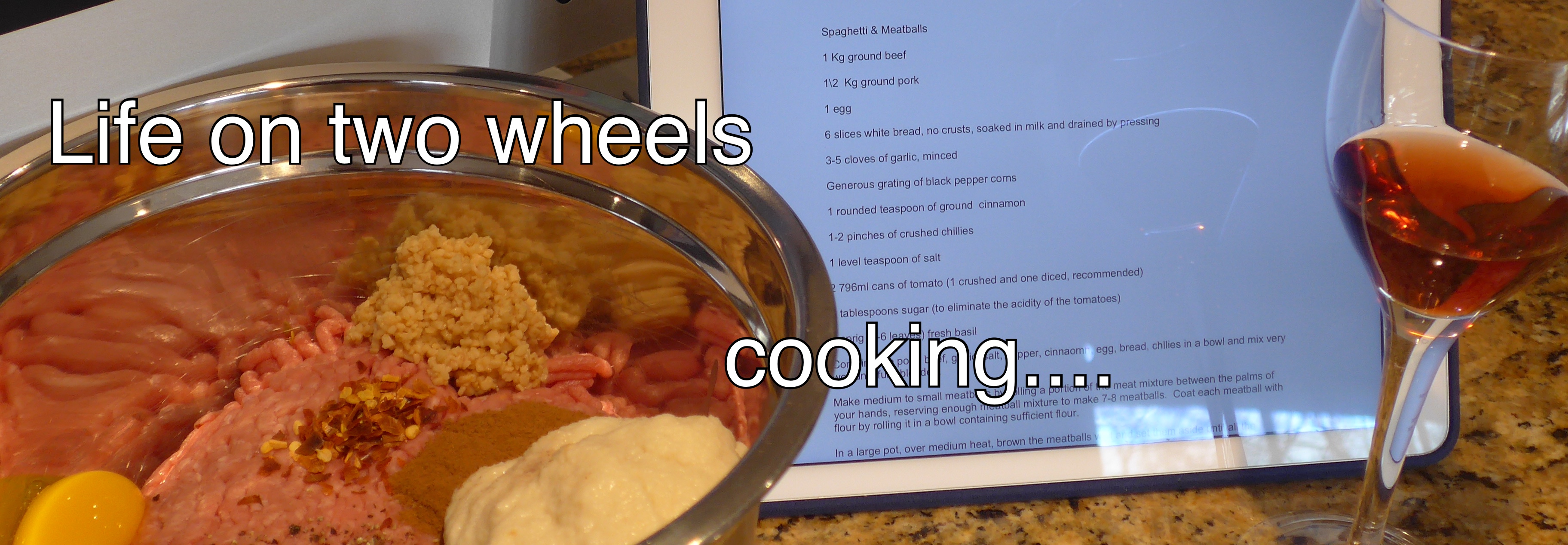Bob (no, not you) sometimes sends me questions.
Sometimes I'm not smart enough to grasp the problem that Bob tosses my way (other Bobs, please refrain from jumping in to provide testimony corroborating my occasional thickness).
A while back, Bob (no, not you) sent me a gem that I didn't immediately grasp the true meaning of. So Bob (no, still not you) had to explain it to me patiently.
Well, it certainly is a
puzzler in the fine tradition of
NPR Car Talk, and I'm not nearly knowledgeable enough to shed any light on the matter.
So I turned to the world's most encyclopaedic source of scooter-related intelligence. Yes, that's right, the Modern Vespa forum.
Here's a link to the post.
Here's Bob's question (I took some small editorial liberties to help the dimmer wits like yours truly in wrapping their brains around the nub of the problem).
Hmm... I see that the image makes Bob's question impossible to actually read.
Here it is clearly this time:
Once again I seek your help.
Perhaps you or one of your readers can answer a question that has long perplexed.
My new scooter requires high octane fuel - at least 91.
Back in the day it was simple - there was a dedicated premium pump somewhere at the station that pushed only the good stuff.
Now all the pumps are dial-a-matic with one hose and three or four grade selections.
Since the single big fat hose and filter hold a considerable volume of gasoline, and I assume that the gasoline in the hose is whatever the last customer selected (likely lower octane), how can I possibly get any of premium fuel into my tiny 6.0 L tank?
I strongly suspect that when I select and pay for premium, in most cases all I'm getting is regular, and treating the next cheapskate to a couple of gallons of my premium fuel for free.
A friend has a clever solution: He bought a 2 gallon can which he fills first, then takes home and empties into his car.
Alas I lack a second vehicle.
The best I've been able to come up with is that I lurk at the entrance of the station and follow immediately behind the person in the Mercedes, BMW or Ferrari.
Surely someone must have a better idea.
To be honest, this never crossed my mind. I guess I always assumed that you got what you paid for.
Is this a misplaced concern?
Is there some kind of check valve re-sucking system that purges the 'wrong' fuel from the hose?
Enquiring minds want to know.
If you, dear reader (that means you, Bob... yes you!) can shed some light, please chime in.
I'll wait for the smart answers to kick in on MV and then re-post the best of the lot here. If you're not the patient type, feel free to follow the link above and follow the action (if any) on Modern Vespa.
- - - - - TIME PASSED - - - - -
If you click the MV link you'll see that not much of any great merit happened, other than people suggesting that Bob shouldn't worry so much, and some folks pointing me in the direction of other threads (
click here,
and here) where, supposedly, the question had been asked, vigorously debated, and possibly answered.
Well it turns out that this one has the MV crowd pretty much stumped, making wild guesses, and stabbing in the dark. The consensus is "
fugetaboutit" and "don't worry, be happy" and I find myself agreeing, yet being totally unsatisfied with the responses.
Otherwise very well-informed people are saying "there's hardly any gas in the hose, half a cup,
max!".
Others say essentially the same thing, but estimates vary from half-a-cup (125 ml), to a cup (250 ml), to two cups (500 ml).
So I started Googling.
The smartest answer from the best source was this, from the
Wall Street Journal:
Q: I ride a motorcycle with a typical three to four gallon gas tank. I ride where fuel stations are farther apart, so I fill up when the tank is still half full. The bike requires premium fuel, and doesn't run well on lower octanes. If the previous customer was pumping regular fuel, I assume the refueling hose is still full of regular fuel, perhaps a couple of gallons. This would mean I'm initially getting a mix instead of pure premium fuel. Is this a genuine concern, or does the system have a mechanism for evacuating the gas pump hose between uses?
-- Paul Kowacki,
Orange Mass.
A: It is a genuine concern, but one that motorcyclists tend to appreciate more than car drivers. According to the American Petroleum Institute the gas-pump hose typically retains about one third of a gallon of fuel. So when you pump a couple gallons of 93-octane premium after the previous customer pumped 87-octane regular, your fuel load would be diluted (not to mention overpriced).
This is more important to motorcyclists because bikes have smaller fuel tanks and a lower tolerance for low-octane gas compared with most cars. I have found that high-performance motorcycles designed to burn premium fuel run poorly on regular. They generally do not have the complex engine-control systems that allow cars to run on fuels of varying octane ratings.
I don't think diluting your premium fuel with a little regular will harm your motorcycle, especially if you always select the highest octane rating available. However, next time you're filling up you may want to get in line behind the driver with the highest-performance car in the station.
So if the WSJ is to be believed, and they are so far the most credible source, there is not half a cup, not a cup, or even two cups, but five cups (give or take - 1/3 of a gallon is 1.24919 liters, which we can round to 1.25 liters, which is five cups on the nose) of fuel left in the hose.
Just in the interest of trying independently to get to the nub of truth, let's say that the average gas station hose is 12 feet long. According to Goodyear's web site, gasoline pump hoses are either 3/8" or 3/4" outside diameter hoses. Let's take the worst case scenario, that's a 3/4" hose. All 3/4" gasoline hoses have an inside diameter of 19.1mm (don't ask me why Goodyear's specs give the outside diameter in SAE and the inside diameter in metric). The volume of gasoline in twelve feet of that type of hose is
Pi (3.14159) times the square of the radius of the inside diameter of the hose (19.1mm divided by 2 = 9.55mm, squared = 91.2025mm) times the length of the hose (12ft, which in mm is 3657.6mm) equals 1,049,416.44 cubicmillimeters, or 1,049.41644 ml, or, rounded down is 1.05 liters, which is just a tad over four cups.
Based on the credible WSJ source, as somewhat corroborated by our mathematical, semi-scientific, guesstimated calculations, if we average the anecdotal journalistic number (5 cups) with the semi-scientific guesstimate (4 cups), we get 4 1/2 cups of questionable fuel in the hose.
In the case of the Vespa GTS 300 i.e., the tank capacity is 9.2 liters. But even if you fill up only once the low fuel light comes on, the tank is not empty. There are still about two liters of fuel in the tank.
Basically I'm buying 7 liters of fuel when I fill up. That means that I'm getting 1.1 liters of questionable gas, and 5.9 liters of the good 91 octane gas that I need and want. Assuming that the octane rating just dilutes like any other liquid, I'm not really getting a full tank of 91 octane, I'm really getting 90.37143 octane.
I think that's pretty well within spitting distance of the truth.
Based on everything I've heard and read about octane ratings and internal combustion engines, that's close enough to 91 octane that the Vespa engine won't suffer for the difference.
So I am declaring this one done, solved and one for the history books. And I am going to join the ranks of the MVers who don't worry about the fudge in the gas that the local gas station is selling me.
Thanks Bob (no, not you, the other Bob), I thoroughly enjoyed digging to the bottom of this week's puzzler.


























